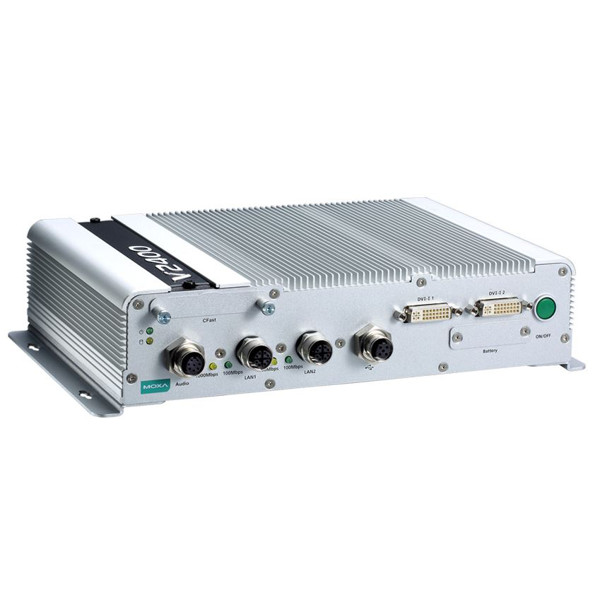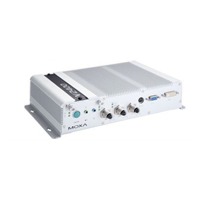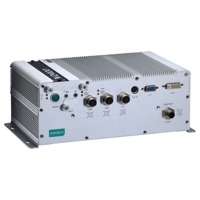V2406A Series - Fanless Railway Computer
The V2406A Series embedded computers are based on the Intel 3rd generation processor, and feature 4 RS-232/422/485 serial ports, dual LAN ports, audio in/out, 3 USB 2.0 hosts, 2 CFast sockets, and 1 SATA storage socket. V2406A computers provide dual DVI-I outputs, and in addition are compliant with a portion of EN 50155, covering operating temperature, power input voltage, surge, ESD, and vibration, making the computers suitable for a variety of industrial applications.
The dual Megabit/Gigabit Ethernet ports with M12 X-coded connectors offer a reliable solution for network redundancy, promising continuous operation for data communication and management. As an added convenience, the V2406A computers have 6 DIs and 2 DOs for connecting digital input/output devices, and the CFast feature provides
the reliability needed for industrial applications that require data buffering and storage expansion.
Pre-installed with Linux Debian 7 or Windows Embedded Standard 7, the V2406A Series provides programmers with a friendly environment for developing sophisticated, bug-free application software at a low cost. Wide temperature models of the V2406A Series that operate reliably in a -40 to 70°C operating temperature range are also available, offering an optimal solution for applications subjected to harsh environments.
Railway Data Security: Building a Durable NVR Platform
In this white paper, Moxa identifies a few solutions to the key challenges railway operators face when trying to secure their data and devices against the peculiar tests of the railway environment. Taking network video recording devices as the stepping off point, we give a brief analysis of how a train's vibrations, extreme temperature fluctuations, and power supply can adversely affect device functioning and durability. The paper then goes on to consider how thoughtful engineering can eliminate these factors as a point of concern, while at the same time building strong value for the customer through carefully considered, centralized, and automated controls and failsafes.
Engineering One Computing Platform for All Classes of Train
This whitepaper discusses the various applications and subsystems to which an on-board train computer may be applied, outside of signaling and control. Most talk within the train industry focuses the vital signaling and control automation; however, today’s trains and other forms of mass transit have many more demands beyond these critical systems. Each class of train has specific requirements and needs that are defined by its on-board auxiliary automation systems. While these requirements vary according to the train environment being served, a core set of hardware requirements may be met that will allow a single, extensible computer to serve in virtually any on-board auxiliary role required. This white paper examines what these core requirements are, and shows how careful computer engineering can cut deployment and integration times for engineers tasked with building on-board train systems.





